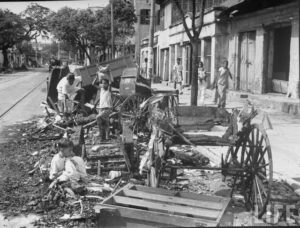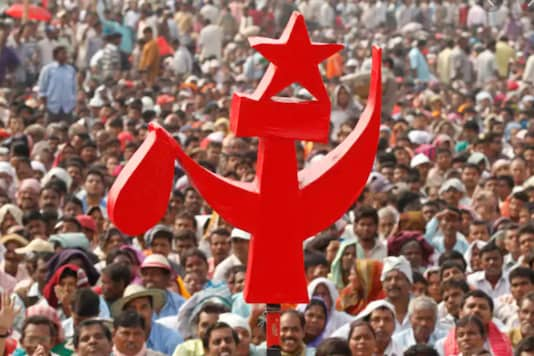Suchetana Chattopadhyay

75 years after the Great Calcutta Killings which paved way for a communal holocaust, the moment of Partition reappears in all its complexity. The years 1946-47 have often been read as a period of retreats, advances and setbacks. Old-style colonial dominations, represented by the British, French and Dutch Empires were being forced to withdraw from Asia. In South, South East and East Asia, large scale anti-imperialist mass upsurge was visible. This was the case in India, Indo-China, Indonesia and the huge unofficial semi-colony, China. European colonial domination over Asia, a process which began in the late fifteenth century, was disintegrating. The crisis of capitalism in the imperial nation-states intensified during the interwar years. The Great Depression led to deepening economic and social crisis as well as political polarisation and rise of fascism. They were weakened by Nazi Occupation of much of Europe during Second World War and the huge damage to metropolitan infrastructure and loss of lives. There was tremendous resistance mounted by subject populations in the colonised countries immediately after the war ended. These conditions made restoration of old-style colonialism virtually impossible. Unlike the Dutch in Indonesia and the French in Vietnam, the British were keen to negotiate a planned exit from their prize colony. The strategy was influenced by colonial and domestic compulsions: the pressure mounted by the two post-war super powers, USA and USSR; the post-war attitudes within Britain and the British Army favouring India’s Independence; the realisation that the colonial administrative costs could no longer be met by an utterly drained colony; the slipping control over the imperial repressive state apparatus in India.
In Bengal, war-induced shortages had already destroyed food security in the countryside. Imposition of war levy and rising food prices combined with food export for military resources, official indifference and systematic profiteering starved to death three million people in 1943. The chief victims of this artificial famine were small peasants and agricultural labourers. Yet super profits were piling up during the same period. Speculations in the share market, operations of the black market, food profiteering boosted this trend. This increased the political confidence of the Indian big bourgeoisie. In the post-war context, the Indian capitalists were also pressing for a negotiated withdrawal of the colonisers. The negotiations included support for Partition and opposition to any social assertion or threat to the rule of private property from below. The absence of any consensus on power sharing among segments of the Indian proprietorial classes and the direct encouragement of British colonisers to widen the cracks, intensified communal polarisation. The political and social tensions based on communal identities now reached their boiling-point.
A communal holocaust was unleashed and accompanied a truncated Independence. Communalism from above was manifest among different proprietor classes. These were the different echelons of the Hindu bhadralok gentry and professionals who had treated their Muslim counterparts as competitors and social inferiors; Hindu and Muslim businessmen and capitalists backed and motivated by neo-conservative religious revivalist movements and pitted against one another; the Hindu Mahasabha brand of violent hatred towards Islam; Muslim Jotedar (rich peasant) interests bent on uprooting the ‘Permanently Settled’ caste Hindu landlords who were powerfully entrenched in the East Bengal countryside and bred competition within the landed gentry. Apart from Kolkata, where riots raged from 16 August 1946 and throughout 1947, the countryside, still reeling from the effects of famine and post-war hardships, was the site of communal consolidations. Hindu peasants from the oppressed caste groups who had sided with Muslims against caste Hindu landlords earlier, were also being mobilised along communal lines by Hindu revivalist organisations. These organisations predicted ruin and dispossession of Hindus in case of Muslim political ascendancy. To large sections of impoverished Muslim agriculturalists, Pakistan represented a peasant utopia. They hoped Pakistan will drive out the Hindu landlords and end the oppression of colonial revenue collection ensured through the Permanent Settlement of 1793.
Yet communal politics was not the sole medium of peasant politics in the countryside. Led by Communist Party of India (CPI), sharecroppers launched the Tebhaga Movement against the landlords and jotedars. Intense repression coupled with internal constraints terminated this struggle. Communist organisers were to claim in the rural areas where the left retained its ideological influence, communal consolidations were resisted by the peasantry. They recognised in religious divisions a strategy of expropriators to re-impose exploitative social relations. While attempting to spread class politics and class solidarity among peasants and workers, the CPI faced constraints and contradictions. The party had emerged as the third largest political force after the war, called for industrial strikes and agrarian uprisings. The aim was to cripple colonial rule as well as prevent Indian and colonial capitalist and landed interests from consolidating their stranglehold on the working masses by taking advantage of a chaotic post-war situation. A number of factors prevented the CPI from attaining political supremacy. Theoretical misreading of identity politics during the war, re-imposition of ban on the party in 1945 and return to a precarious underground existence, heightened state offensive and nationalist hostility in the wake of militant left activities underlined the ideological and practical vulnerability of the left in the face of Partition. The CPI was therefore not strong enough to prevent the communal holocaust of 1946-47 and the attendant communalisation of class struggle. Despite these problems, class identity, which the CPI attempted to spread by forging unity across divisions was the only organised political effort to confront the material agenda of communal politics. Through this process was being highlighted the social interests of the marginalised, the dispossessed and the destitute which the proprietor content of both nationalist and communal politics denied and suppressed. The dispossessed and the oppressed were a constant reminder of that other vision of decolonisation which was suffering grave reverses but had refused to vanish. This was the aspiration from below to overturn the exploitative relationships which had emerged under colonial rule.
End of colonialism was not bringing about even the remotest possibility of social emancipation for the poor. Instead, continued social dislocation and material exploitation loomed in the shape of ‘Transfer of Power’ to the indigenous expropriators; the latter were emerging as the ‘ruling-classes-in-waiting’. They were being backed by the colonisers in retreat, eager to prevent the ascendancy of any force from below. This was a world where the poor were the actors and victims of a communalised climate. The dualism of ‘class-for-itself’ and ‘class-in-itself’ was evident from the vertical and horizontal solidarities developing along lines of class and communal consciousness. This was a world where support for communal identity quickly dissolved into the chaos wrought by loss of livelihood, semi-starvation, late imperialist violence, the suppression of social aspirations of the oppressed by landlords and capitalists. This was a world where the gendered order imprisoned destitute and semi-destitute women; the everyday harsh realities of transcommunal patriarchy in the slums and the streets turned them into desperate fighters, survivors and victims. They either resisted, perpetuated or displayed indifference towards the politics of fragmented identities. Their primary concern was to exist despite the intertwined regimes of violence and poverty which threatened to engulf them.
I would like to conclude by referring to the communist writer Manik Bandopadhyay’s short story Khatian (‘Settling Accounts’). In Khatian, the worker-protagonist is caught in the communal crossfire and his friend, who belongs to another community, offers him shelter. When the immediate threat has died down, he emerges from the hideout. From a fugitive in an area where he might be murdered if his community identity is discovered, he is transformed into an accidental stroller, the man who roams the city streets. While traversing the riot torn neighbourhoods of Kolkata, he walks into a European enclave where the colonial masters live. They are fortified in their well-guarded mansions, unaffected by the brutality rendering millions like him homeless. His self-identification is revealed at the end of the story when he is arrested at the factory gates, along with his friend, as a union activist. They were protesting against the lockout and the related loss of livelihood by the bosses. Now jobless and facing an extremely uncertain future, they come to an unsentimental and cynical agreement: they are poor people; they belong to the race of the poor. For them, this is the moment of historic self-assertion in a period of retreat.
The author teaches History at Jadavpur University


